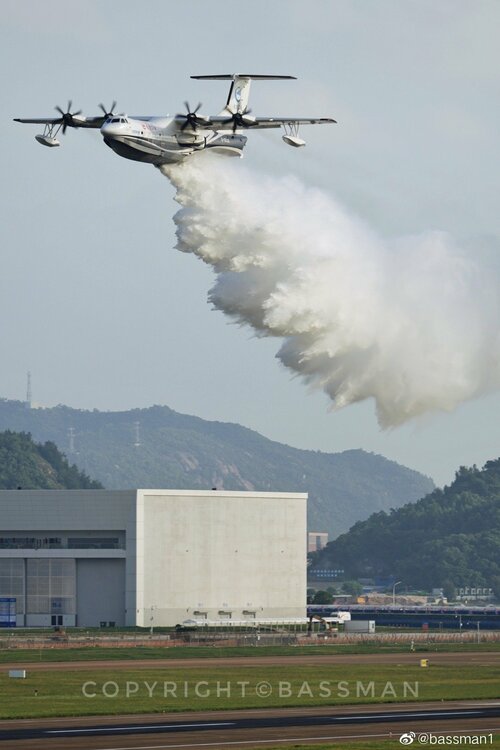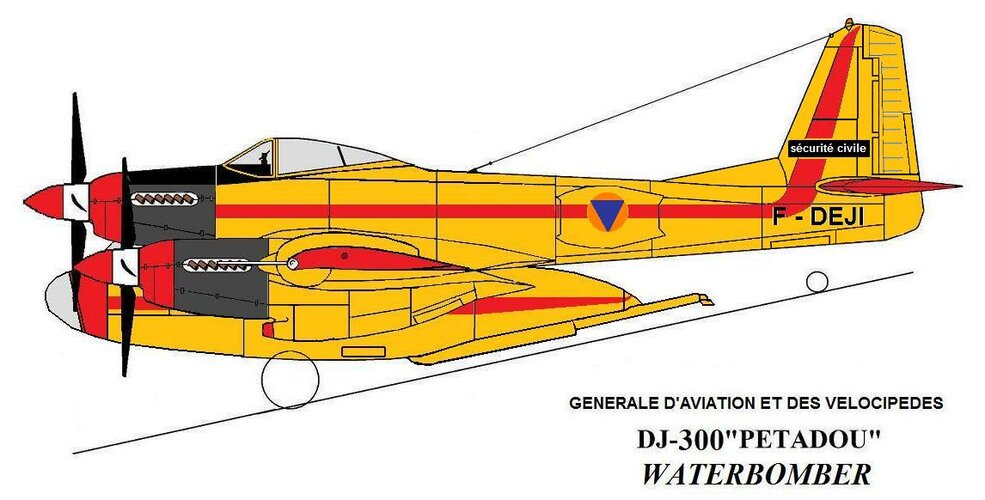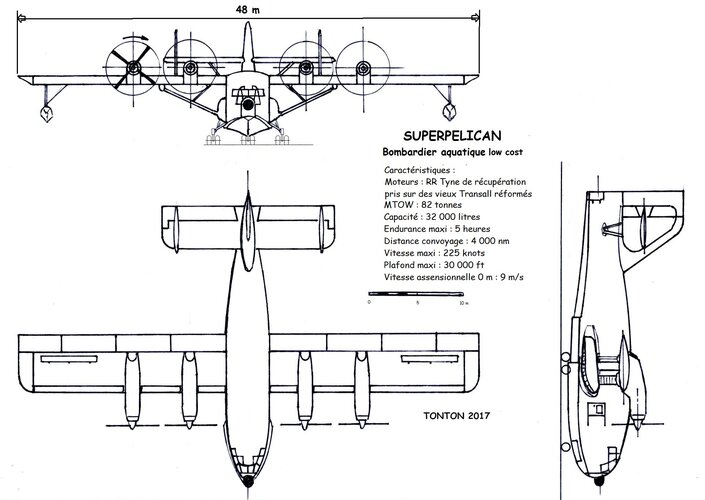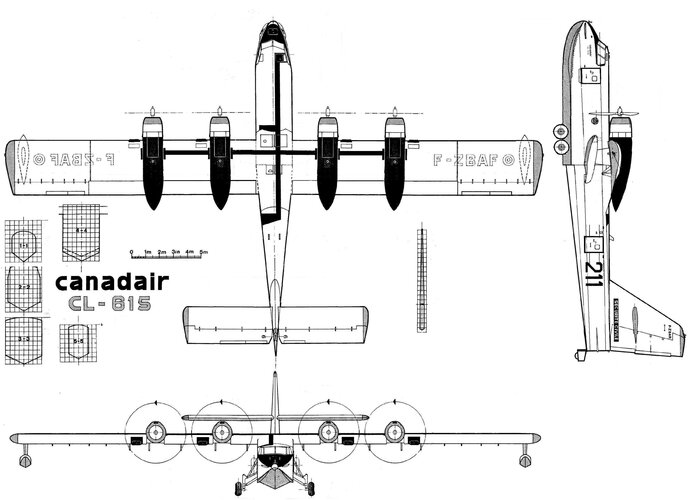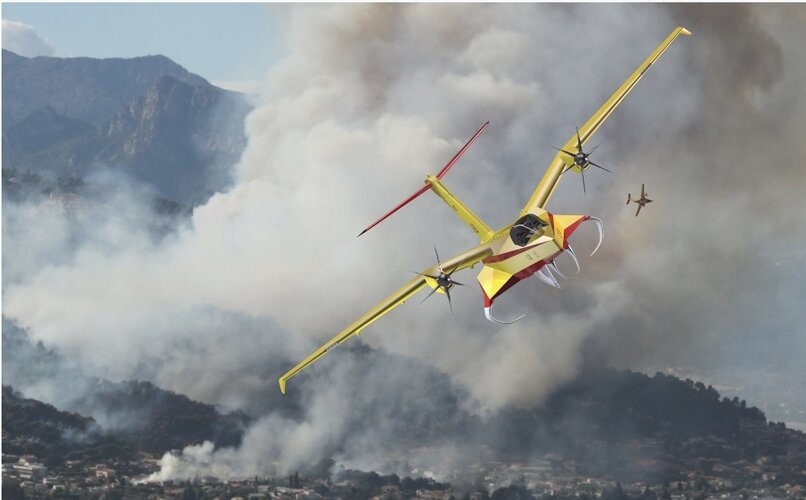Pardon me, old thread that popped up in the sidebar.
Liquid inertia in a container, as well as changes in mass distribution during dispersion are likely very non-trivial, especially if the thing is (somewhat) guided. Might as well go for an aerodynamically rotated pump only but assuming these gliding "drop tanks" or whatchamacallit are non-retrievable, all complexity adds to the cost and increases possible failure modes. Plus the currently preferred drop mode seems to be a rather (ahem) sudden dump, suggesting anything lighter might be insufficient. Perhaps water balloons of different constructions and volumes are a better idea to get through and douse every aspect of the fire column at once. But note that these speculations of mine are becoming more, not less, uninformed, at least for the time being.
The drops are actually controlled, saw several videos of different equipment that all have adjustable dump rates.
Someone mentioned fire seasons above. That made me think of firefighting aircraft carrier groups ...
Several of the bigger tankers fly down to the southern hemisphere for their fire season and then come back to the US during our summers.
Granted the short
Hercules' cabin is too big for the largest retardant tanks it can lift. However, if those tanks can be removed in the 'off season', the aircraft's owners can employ if as a profit-making cargo aircraft. All dedicated air tankers are hangar queens when they aren't waterbombing.
A totally new airframe design won't save you on certification and, besides, existing air tankers all fly under experimental status anyway. If "we are stuck somewhere in the middle between SEAT and LAT", you are in the realm of the Viking 515. And Viking is trepidatious about building this warmed-over 54-year-old design for which they already own the tooling and hold the rights to. Like Canadair before them, Viking needs a convincing argument that their air tanker can 'moonlight' as something else outside of fire season.
In BC, the 'customer' has skewed away from old 'Medium Air Tankers' in favour of SEATs on floats. The argument is that the
Air Tractors can get into smaller lakes (or lakes in steep-side valleys) for scooping. In reality, it is about finding the cheapest solution that it politically-acceptable when wildfires aren't actually burning Lytton to the ground.
So, your challenge is to produce a design with multiple uses to make useful year-round. Or, so cheap (and simple to understand), that politicians will yum it up

The problem is, if we're skimming water from lakes and reservoirs, the best option is a relatively small aircraft to get into the smaller lakes or even rivers closer to the fire. Dropping a relatively small quantity of water at a time, but 5-10 minutes between drops or less.
An AT802 Fire Boss hauls as much water as a Conair Firecat/ Fire Tracker. ~6800lbs of water. A CL-415 hauls about twice as much, ~13,000lbs.
If you want more capacity, you'd either need to use Chinook helicopter engines or C130 engines, with all the fun that implies for controlling a multi-thousand-horsepower single-engined aircraft, or go with twin engines. Twin engines means twice the maintenance costs.
The bigger tankers, like the C130s or 737s or the big monsters, fly from the nearest airport big enough to handle them. And sometimes that means an airport over an hour away from the fire
at 737 speeds.
==============
But really, the problem gets split into roughly 3 classes of tankers:
Helitack: helicopters. Whether a Bell 206 or a CH54. Those get used to drop water on grass fires (and on sagebrush, where I live), grabbing water from wherever is closest. Next bucket from one helo lands within 5 minutes of the last one. A bad fire gets multiple helos on it, many rural fire trucks have a bambi bucket stashed onboard so if someone has a helo that can carry the load they'll stick a firefighter in the back with a radio and have them drop on command. Up to and including news helos, though most don't have a big enough helo to carry much of a load.
Single Seat Air Tankers: AT802 etc. Relatively small loads of water, but the small airframe can get them very close to a fire if needed.
Big Guns: CL415s, C130s and larger, all the way up to a DC-10. The CL415 is closer in an operational sense to the SSATs because it scoops, but has a crew of 2.
For the Helitack jobs, assume that you're mostly talking Huey and Blackhawk sized aircraft. Their mission has been described in this thread already, often more to get fire crews somewhere quickly than to drop water. Technically, a Helitack bambi bucket can hold about as much water as the Single Seat tankers, ~6000lbs.
So now we need to decide between a bigger single seater or a "new" big gun.
The niche would seem to be a single seater that can pick up ~9000lbs of water, +50% over Fire Bosses or Fire Trackers. Something cheaper to operate than a Fire Tracker but with more capacity than a Fire Boss.
I don't see a new "big gun" airframe being successful outside of a C130 conversion. And the only way to pack more water into a C130 is to make the tanks lighter, C130s mass out before they cube out when water bombing. So, composite water tanks!


